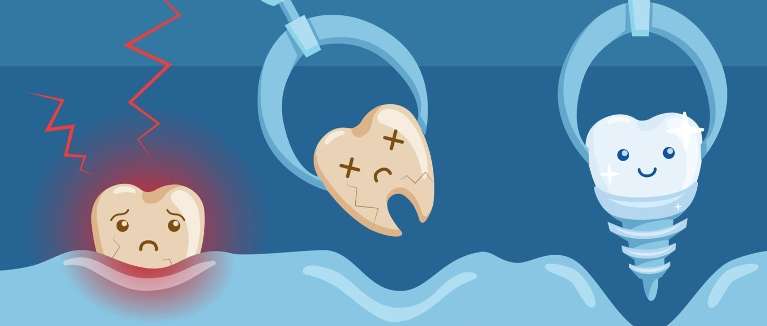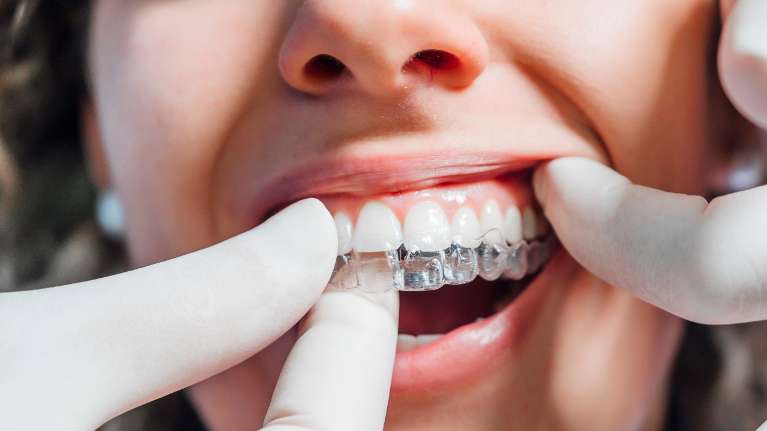
WHAT TO EXPECT POST DENTAL SURGERY?
- Bleeding: A little bleeding or “oozing” for the first 12-24 hours. Leave it alone as it is probably just minor.
- Swelling: Some swelling and discoloration is normal following a surgical procedure in the mouth. It should reach its maximum in two-to-three days after surgery and should begin to diminish by the fifth postoperative day.
- Discomfort: The most discomfort that you may experience may occur for a few hours after the sensation returns to your mouth. It may gradually increase again for 2-3 days and then begin to diminish over the next few days.
THE DAY AFTER YOUR SURGERY
- Brushing – For the UNTREATED AREAS of your mouth, you may continue to brush and floss as you would normally. For the TREATED AREAS of your mouth, only brush the chewing surface or these teeth (avoid brushing the gums) with a manual toothbrush. Do not use an electric toothbrush at the surgical site for the first 4 weeks. Remember, the cleaner you keep the teeth the better it will heal.
- Beginning 24 hours after the surgery, rinse with PRESCRIPTION MOUTHRINSE twice daily for 2 weeks. This will keep the treated area clean while you are not brushing.
- If ANTIBIOTICS are prescribed, be SURE to take ALL that have been prescribed, AS DIRECTED.
- Use WARM, MOIST HEAT on face for swelling, STARTING THE SECOND DAY OF RECOVERY. Continue until the swelling subsides. A warm, wet washcloth or heating pad will suffice.
- SUTURES may dissolve or be removed at your follow-up appointment. DO NOT pull your lip or cheek to look at the surgical site. Avoid playing with the sutures with your tongue.
THINGS TO DO IMMEDIATELY AFTER DENTAL SURGERY
- For Bleeding: Keep head elevated and rest. Do not suck or spit excessively. Do not pull your lip or cheek to look at the surgical site. NOTE: Some oozing and discoloration of the saliva is normal. If bleeding is severe or persists, moisten gauze or a tea bag, wring out the excess water, and place it against the area from where the bleeding is coming. Hold in place with moderate finger pressure for 20 minutes. Repeat as necessary.
- For Swelling: Place ice or cold compresses on the region of surgery (ten minutes on ten minutes off) for the first 8-12 hours. NOTE: Ice bags or cold compresses should only be used on the day of surgery.
- For Diet: A nutritious liquid or soft diet will be necessary for the first weeks after the surgery. Do your best to NOT eat on the side surgery was performed. Healing will occur in weekly increments; therefore, it is best to gradually (in weekly increments) return the diet and/or other mouth/oral activities back to normal.
- For Discomfort: Take medications as directed for PAIN. The analgesics prescribed can relieve mild to moderate pain. For more severe pain, take other prescription pain medication as directed. Remember that these medications can take up to 30 minutes to one hour to take effect. If you are using any of these medications for the first time, exercise caution with the initial doses (start with ½ a pill).
WHAT NOT TO DO
- No Smoking: Avoid smoking and alcohol consumption during the healing period (at least for 7 days, purchase the patch if necessary). It is recommended that you do not smoke for the first two weeks since smoking can interfere with the healing and make the results less predictable. If a bone graft was placed, it is recommended to quit for at least 6 weeks. Bone grafting results are not predictable in patients who continue to smoke.
- No Physical Activity: For the first 24 to 48 hours, one should REST. Patients who have sedation should refrain from driving an automobile or from engaging in any task that requires alertness for the next 24 hours.
WHEN TO CONTACT YOUR DENTAL CLINIC
- Bleeding is excessive and cannot be controlled.
- Discomfort is poorly controlled.
- Excessive nausea.
- Swelling is excessive, spreading, or continuing to enlarge after 60 hours.
- Allergic reactions to medications occur, which are causing a generalized rash or excessive itching.
If you are experiencing any of the above symptoms post operation, please contact the Paddington Dentistry clinic to book an emergency appointment or book online.



